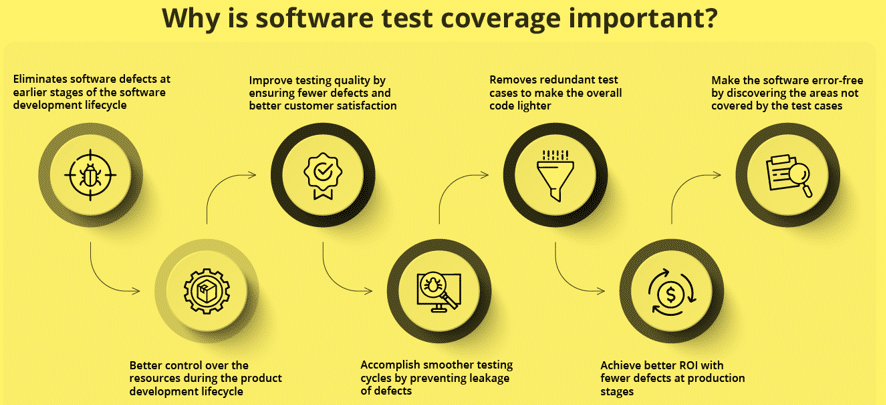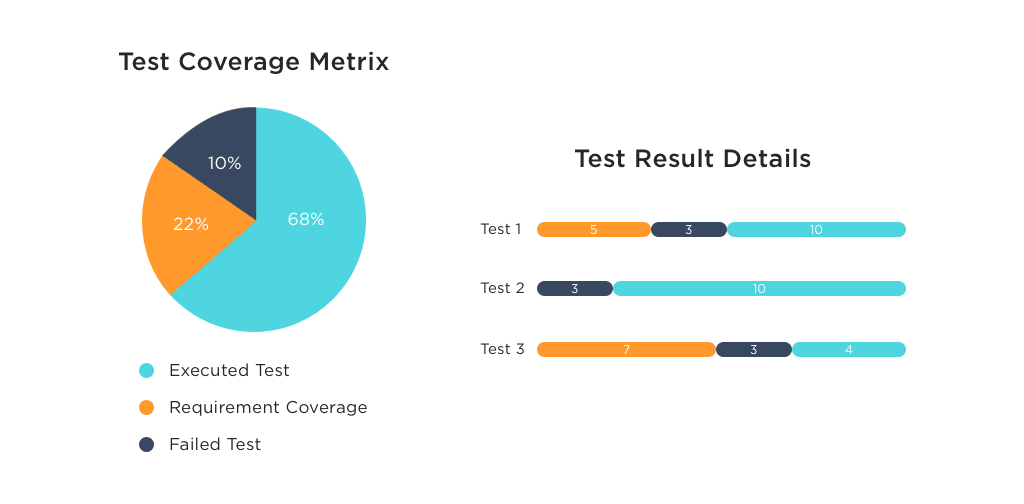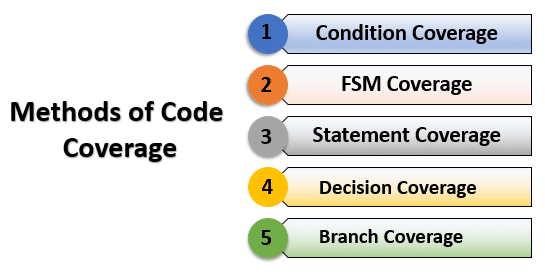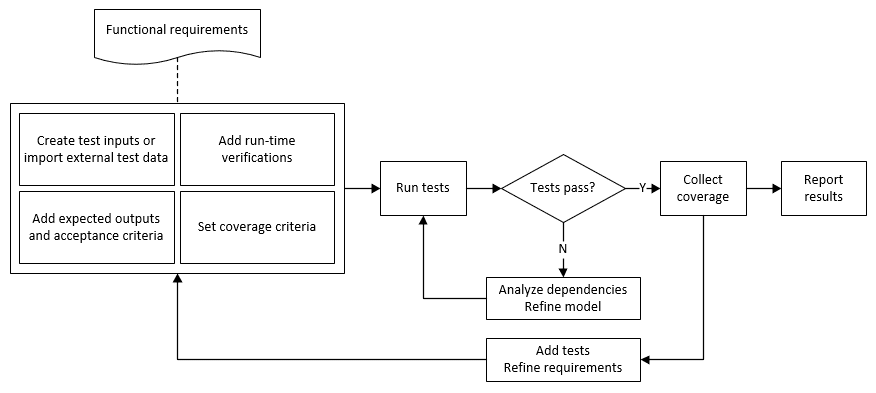How to Ensure Test Coverage?
Neglecting to test critical components is a common mistake in flawed testing strategies. By measuring and improving the project’s test coverage, you can fight this problem easily. Test coverage in software testing is a measure of how well the existing test can protect your applications against regressions.
Here we will cover the main benefits of test coverage and its best strategy to ensure test coverage. We give tips to ensure your application before parting ways with some final considerations.

What is Test Coverage in software testing?
Measure the percentage of code executed during testing through test coverage. Code coverage measures testing coverage and identify untested code areas which may contain bugs.
Typically, the higher the test coverage in software testing, the more confidence developers have that their code is working correctly. However, 100% coverage isn’t always necessary/practical, test quality and effectiveness also matter.
What is Test Coverage Signifies?
Identify untested and potentially buggy code through measuring test coverage. It is a measure of how much of the codebase is being executed during a particular testing process. Test coverage tools show executed/unexecuted code lines to improve test quality/effectiveness and identify complex/highly dependent code.
How can Test Coverage be accomplished?
Accomplish test coverage through various methods depending on the programming language and development environment. Some common methods include:
- Using a code coverage tool: Different programming languages have various code coverage tools: JaCoCo for Java, Istanbul for JS, Cobertura for .NET, etc. These tools can be integrated into the development workflow and will automatically generate a report of the test coverage in software testing.
- Using a code coverage library: Some programming languages, such as Python, have built-in libraries for measuring test coverage. These libraries can be imported and used to measure the test coverage of a codebase.
- Manual instrumentation: In some cases, developers may choose to manually instrument their code to measure test coverage. This can be done by adding code to the application that tracks which lines of code are executed during testing.
- Using Code coverage testing frameworks: Some popular testing frameworks like JUnit, TestNG, etc
The Benefits of Test Coverage:
- Identifying untested code: Test coverage in software testing helps to identify areas of the codebase that are not being tested and may contain bugs. By focusing on increasing test coverage in these areas, developers can improve the overall quality and reliability of the software.
- Improving test effectiveness: Test coverage can help developers to understand how well their tests are covering the codebase. This can help them to identify areas of the code that need more testing, or to improve the quality of existing tests.
- Facilitating code refactoring: Test coverage can be used to ensure that changes to the codebase do not introduce new bugs. By ensuring that the code is well-tested, developers can feel more confident about making changes to the codebase, which can help to facilitate code refactoring and improve maintainability.
- Enhancing the development process: Test coverage can help to ensure that the development process is more efficient by identifying areas of the code that may be complex and require additional testing. This can help to ensure that the codebase is stable and reliable before being released to production.
- Measuring the quality of the code: Test coverage can be used as a metric for the quality of the codebase. A high test coverage percentage indicates that a large portion of the code has been tested and is less likely to contain bugs.
Tips for performing test coverage

Here are some tips for performing test coverage effectively:
- Use code coverage tools: Code coverage tools can automate the process of measuring test coverage, making it easier to track progress and identify areas of the codebase that need more testing.
- Use multiple types of tests: To achieve comprehensive test coverage, it’s important to use a variety of test types such as unit tests, integration tests, and acceptance tests. Each type of test has its own strengths and weaknesses and will uncover different types of bugs.
- Use meaningful test cases: Writing meaningful test cases that cover all possible scenarios, edge cases, and use cases can ensure better coverage.
- Prioritize critical areas: It’s important to focus on testing the most critical areas of the codebase first, such as code that handles user input or manages sensitive data.
- Continuously monitor and improve: Regularly check the test coverage and strive to improve it. Keep in mind that it’s not necessary to achieve 100% coverage, but it’s important to have a high coverage for the most important parts of the codebase.
- Use Mutation Testing: Mutation Testing is a technique to measure the effectiveness of the test suite. It introduces small changes in the codebase and checks whether the test suite can detect them.
- Use Test coverage testing frameworks: Some popular testing frameworks like JUnit, TestNG, etc have support for measuring code coverage, using that framework can help to get the coverage in one go.
What is Code Coverage?
Code coverage is a measure of how much of the codebase is being executed during a particular software testing process. It is used to identify areas of the code that are not being tested and may contain bugs.
Code coverage tools measure coverage and present results in a report/visualization. Code coverage improves software quality/reliability, facilitates code refactoring, and enhances maintainability.
Why Measure Code Coverage?

Measuring code coverage helps to identify the parts of the codebase that are not being tested and may contain bugs. It provides a way to understand how well the tests are covering the codebase and can help developers to focus their testing efforts on the areas that need it most.
Measuring code coverage can also be used as a quality metric for the codebase. High code coverage implies more tested code and reduced bug likelihood. However, achieving 100% code coverage does not guarantee that the code is free of bugs. 100% coverage is one aspect of code quality measurement and there are other approaches as well to
Test Coverage vs Code Coverage
Test coverage and code coverage are closely related concepts in software development, but they have some key differences:
- Measure the percentage of codebase executed by a set of tests to determine test coverage. Evaluate the quality of the tests with test coverage.
- Determine code coverage by measuring the percentage of code executed during a testing process. Assess the quality of the codebase with code coverage.
- Identify untested code and potential bug areas by using test coverage. Use code coverage to understand test coverage of the codebase and identify areas for improvement.
- Evaluate the quality of tests with test coverage, and evaluate the quality of the codebase with code coverage.
- Improve test coverage by writing more and better tests, and improve code coverage by increasing the number of tests or changing testing methods.
- Use test coverage to evaluate the effectiveness of the test suite and identify areas needing more tests. Use code coverage to evaluate the quality of the codebase and identify areas needing refactoring.
- Measure both test coverage and code coverage using tools and frameworks, but the methods may differ.
Types of Code Coverage:

Line coverage is one of the most specific types of code coverage, and it checks whether tests cover a given line. Line coverage is represented by the percentage of the lines which are covered by the tests. There are some more types of code coverage available which include function coverage, block coverage and statement coverage.
The Limitations of Code Coverage
Code coverage is a limited metric, not indicating test quality and high coverage doesn’t guarantee good tests. On the other hand, low coverage indicates potential issues.
The other limitation of code coverage is that it works with code-based tests and particularly unit tests. This type of testing is undoubtedly critical and provides valuable feedback as it is certainly not enough.
When you need a big-picture view of how well the application is being tested, test coverage has your back. However, code coverage only offers value as a metric if it’s used widely and its limitations are kept in mind.
How To Perform Test Coverage?

Calculating is one of the hard things about test coverage. Techniques vary for the coming test coverage.
Here are the techniques to perform Test Coverage.-
Product Coverage
Product coverage refers to the extent to which a product or service meets the needs and expectations of its intended users or customers. It is a measure of how well the product or service addresses the problem or need that it was designed to solve.
Product coverage includes both functional coverage and non-functional coverage. Measure the extent to which a product or service meets its intended use cases by comparing the product’s features and capabilities to the needs and requirements of its users to assess functional coverage.
Risk Coverage
Address or mitigate the extent of a risk or potential problem through risk coverage. You can measure – how well a system, organization, or individual is protected against potential risks or hazards.
Apply risk coverage to various areas such as insurance, security, compliance and IT systems. For example, in insurance, risk coverage refers to the extent to which a policy covers specific risks or hazards.
In security, risk coverage refers to the extent to which an organization’s security measures protect against potential threats. In compliance, risk coverage refers to the extent to which an organization’s policies and procedures comply with legal or regulatory requirements.
Requirements Coverage
One can measure requirements coverage by comparing the final product or system to the original requirements. It incorporates the use of techniques such as: testing, inspections and reviews. Assess requirements coverage at various levels such as functional, performance, and usability requirements coverage.
How Do You Ensure Test Coverage Is Good?
- Identify and prioritize requirements: Understand the requirements of the system and prioritize them based on their importance and risk. Thoroughly test critical requirements by ensuring complete coverage.
- Create a comprehensive test plan: Develop a test plan that covers all the requirements and includes a variety of test types such as unit tests, integration tests, and acceptance tests.
- Use code coverage tools: Measure the percentage of code executed during testing using code coverage tools to identify untested areas of the codebase.
- Use test automation: Automate as many tests as possible to increase efficiency and reduce the possibility of human error.
- Conduct regular reviews: Regularly review the code and test cases to ensure that they are thorough and effective.
- Track and monitor coverage metrics: Track and monitor coverage metrics over time to identify trends and areas for improvement.
How to Improve Test Coverage?
Remove Dead Code
Increase coverage by eliminating dead/zombie code to decrease the denominator (total code). Find dead code mainly in program history resulting from added, deleted, and disabled feature code. By writing additional tests, you can increase your total code coverage ratios.
Remove Redundant
Eliminating the cloned clone can improve test coverage ratios in the same way as by removing dead code. Mainly the long program consists of base code and code blocks which have clones in the program. So if you find the clones then make sure to remove it as it will help to increase test coverage ratios.
Some of the test coverage mechanisms
Unit Testing
Conduct unit testing by testing individual software components in isolation from the rest of the system. The goal of unit testing is to validate that each unit of the software application is working as intended.
Automatically conduct unit testing, which developers typically perform as part of the development process. Automatically run unit tests to exercise specific code functionality and ensure expected behavior.
Functional Testing
Functional testing can include a variety of test types, such as:
- Black-box testing: This type of testing verifies that the software behaves correctly without looking at the internal code.
- White-box testing: This type of testing verifies that the internal code behaves correctly.
- Grey-box testing: This type of testing combines black-box and white-box testing by looking at both the external behavior and internal code.
Acceptance Testing
Acceptance testing is a type of software testing that verifies that a software application meets the requirements and is ready for delivery to the end users. Ensure software fitness for purpose and meeting of business/customer needs through acceptance testing.
Conduct acceptance testing by the customer, end-user, or a dedicated testing team. Conduct acceptance testing, which typically involves manual testing, but may also include automation testing. Accomplish test coverage through various methods depending on the programming language and development environment. Encompass various types of testing to ensure the software is functional, usable, and performs optimally.
Integration testing
Integration testing verifies software component interaction. The goal of integration testing is to identify and fix any issues that may arise in different systems.
Integration testing can include a variety of test types, such as:
- Interface testing: This type of testing verifies that different components of the system can communicate with each other correctly.
- End-to-end testing: This type of testing verifies that the entire system works correctly, from the user interface to the back-end services.
- Component testing: This type of testing verifies that individual components of the system work correctly when integrated with other components.
- Integration testing: It helps ensure complete test coverage and eliminates integration issues by verifying the seamless interaction of various system components.
Conclusion
The testing integration helps developers to develop a profound mobile application and other IT resources. We always encourage enhancing the testing before deploying the application in the market.
At Amplework, our experienced developers conduct multiple tests to make sure that all the available information, functionalities as well as APIs should be working properly in an effective way.


 sales@amplework.com
sales@amplework.com
 (+91) 9636-962-228
(+91) 9636-962-228





